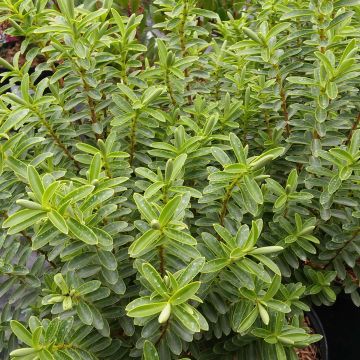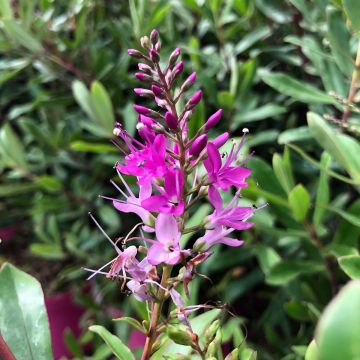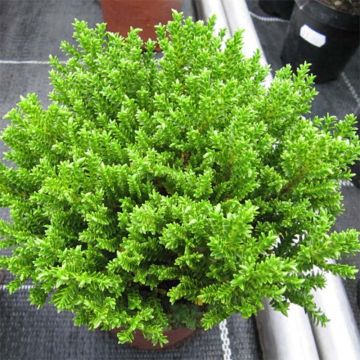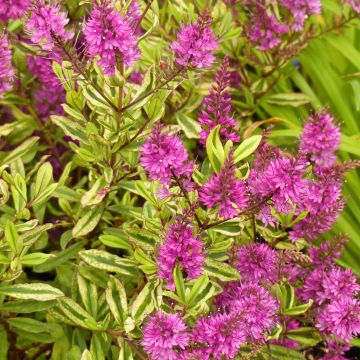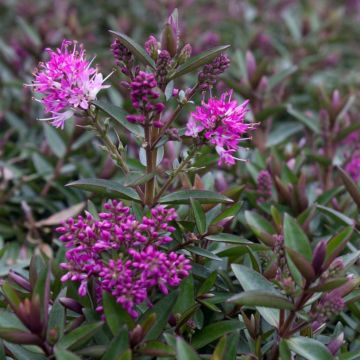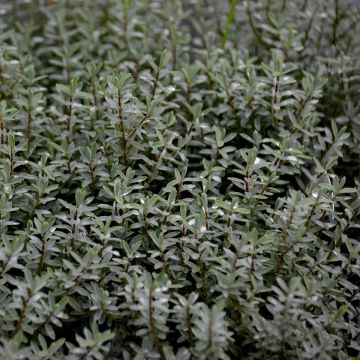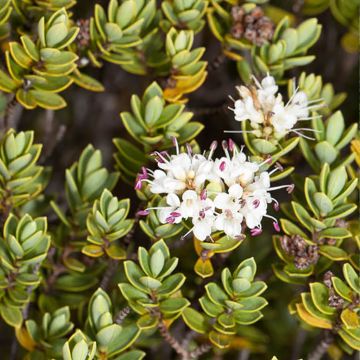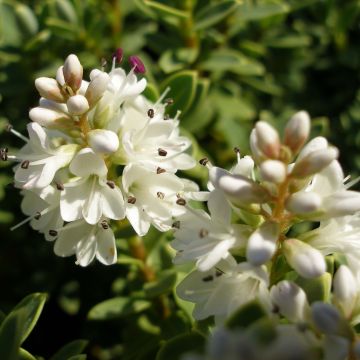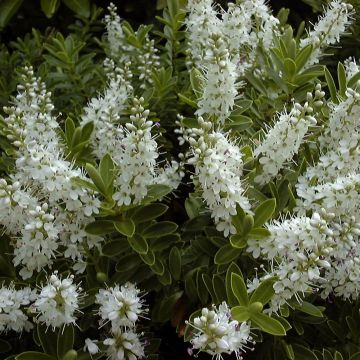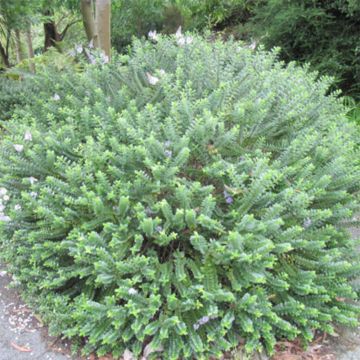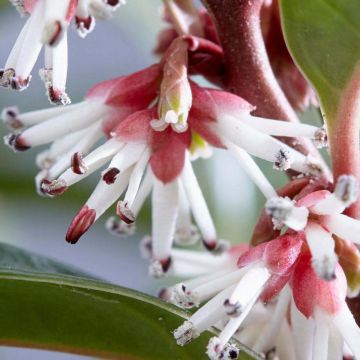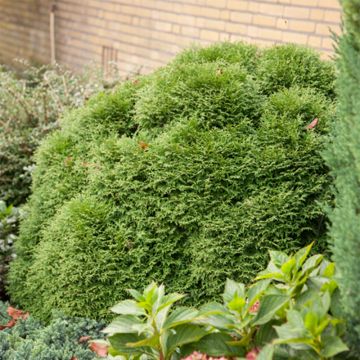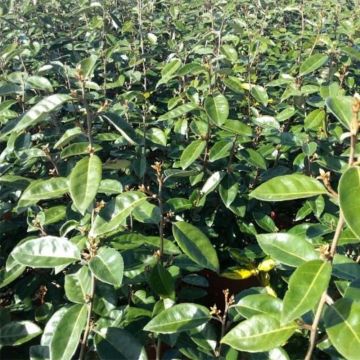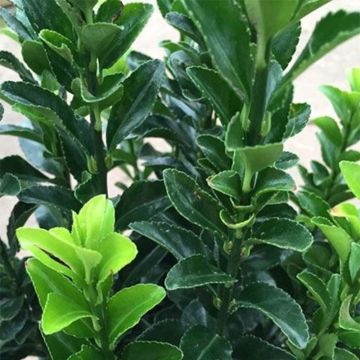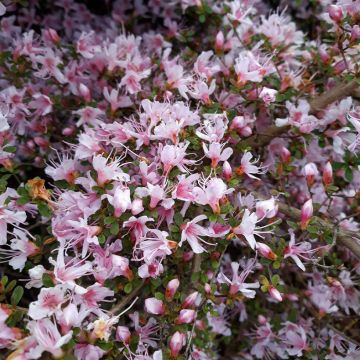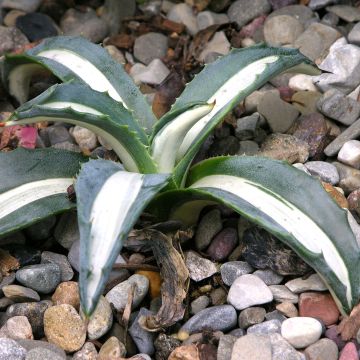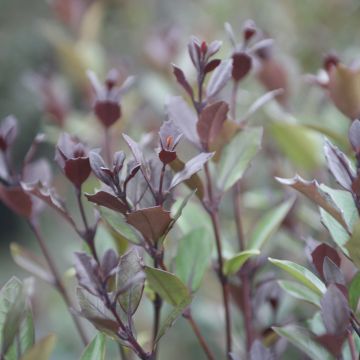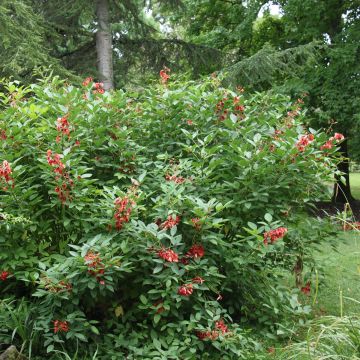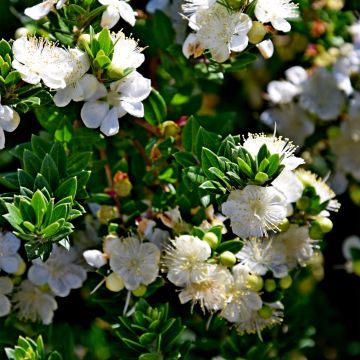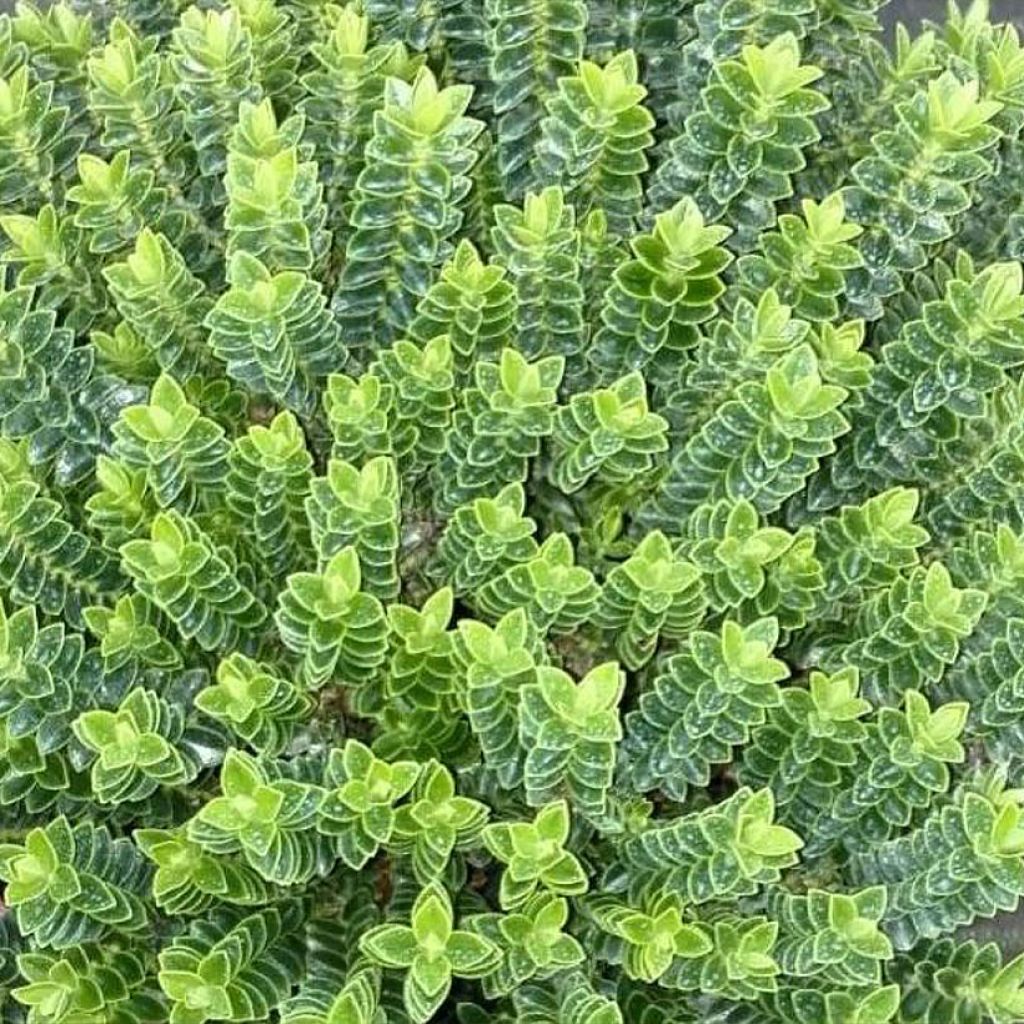

Hebe odora Nana - Boxwood Hebe
Hebe odora Nana - Boxwood Hebe
Hebe odora Nana
Boxwood Hebe, Box-leaved Hebe
This item cannot be shipped to the selected country
Delivery charge from €5.90
More information
Schedule delivery date,
and select date in basket
This plant carries a 24 months recovery warranty
More information
We guarantee the quality of our plants for a full growing cycle, and will replace at our expense any plant that fails to recover under normal climatic and planting conditions.
From €5.90 for pickup delivery and €6.90 for home delivery
Express home delivery from €8.90.
Does this plant fit my garden?
Set up your Plantfit profile →
Description
Hebe odora 'Nana' is a variety of shrubby veronica that forms a miniature cushion with a very aesthetic design. Its glossy dark green evergreen foliage is perfectly arranged in neatly aligned ranks on the branches. In spring, small white inflorescences form at their tips. This Veronica thrives in sunlight, in most moist but well-drained soils. Although it is moderately hardy, it copes well with pot cultivation in colder regions.
Formerly classified among the Scrophulariaceae, the Hebe genus is now part of the Plantaginaceae family, the family of Plantain which also includes Russellia with its coral-red flowers and Bacopa, widely used in hanging baskets. Hebes, or shrubby Veronicas, are now separated from the genus Veronica, which is reserved for herbaceous Veronicas. The approximately one hundred species of Hebe recorded are mostly native to New Zealand, with others coming from Tasmania and southern Australia. The first introduction of shrub veronica to Europe dates back to 1775, following an expedition by the famous Captain Cook.
Hebe odora 'Nana' is a compact variety, as indicated by its name, of a relatively hardy New Zealand species, also known as Hebe buxifolia, due to its leaves resembling that of holly. The plant forms, after 5 to 10 years, a compact cushion, approximately 30 cm in height and 50 cm in spread, with a spontaneously very regular spreading dome habit. The fine and erect branches are particularly dense. They are adorned with tiny evergreen leaves, about one centimetre long, with a sharply pointed elliptical shape at the tip, and slightly incurved along the central vein. They are dark green on the upper side, bordered by a fine lighter line that highlights their geometric shape, and their surface is glossy. The uniqueness of this Veronica lies in the arrangement of the leaves which are perfectly aligned in four ranks, each spaced 90° apart. This flawless arrangement gives a very aesthetic architectural appearance to this plant. In May-June, spikes of white flowers bloom at the tips of the branches. Measuring 2 to 3 cm long, they consist of small flowers of pure white, although sometimes tinged with pale lilac, about 1 cm in diameter.
Hebe odora 'Nana' will easily find its place in the garden due to its small dimensions. In cold climates, it can be grown in pots to be wintered in a sheltered location. Its perfectly geometric architecture makes it an excellent choice for contemporary gardens. It will also be well-suited as an edge plant in a border or in a rockery. Plant it alongside other compact plants that will not visually overwhelm it. Pinus strobus 'Mary Butler' is a dwarf Weymouth Pine that forms a ball of 55 cm in diameter, with long, soft needles of a silver-blue green, which will create a very elegant colour combination with your little Hebe. To enrich your scene with brighter colours, opt for Lewisias, whose succulent leaves form very sculptural rosettes, especially laden with flowers in spring. The colour palette is very wide in the range, and their dimensions (approximately 3 cm in diameter) will harmoniously match the miniature foliage of the Hebe.
Report an error about the product description
Plant habit
Flowering
Foliage
Botanical data
Hebe
odora
Nana
Plantaginaceae
Boxwood Hebe, Box-leaved Hebe
Hebe buxifilia Nana, Veronica odora Nana, Hebe anomala Nana, Veronica anomala Nana, Veronica buxifolia
Cultivar or hybrid
Other Hebe - Shrubby Veronica
Planting and care
Easy to care for, Hebe odora 'Nana' prefers sunny situations and well-drained soils that do not retain too much water. Once established, it can even tolerate short periods of drought. Moderately hardy, it withstands temperatures down to -10°C/-12°C. In the coldest regions, however, it is advisable to protect it during winter or to plant it in a pot and bring it indoors to a greenhouse or frost-free conservatory. After flowering, remove the faded inflorescences using shears. This light trimming will help maintain a compact habit.
Planting period
Intended location
Care
This item has not been reviewed yet - be the first to leave a review about it.
Evergreen shrubs
Haven't found what you were looking for?
Hardiness is the lowest winter temperature a plant can endure without suffering serious damage or even dying. However, hardiness is affected by location (a sheltered area, such as a patio), protection (winter cover) and soil type (hardiness is improved by well-drained soil).

Photo Sharing Terms & Conditions
In order to encourage gardeners to interact and share their experiences, Promesse de fleurs offers various media enabling content to be uploaded onto its Site - in particular via the ‘Photo sharing’ module.
The User agrees to refrain from:
- Posting any content that is illegal, prejudicial, insulting, racist, inciteful to hatred, revisionist, contrary to public decency, that infringes on privacy or on the privacy rights of third parties, in particular the publicity rights of persons and goods, intellectual property rights, or the right to privacy.
- Submitting content on behalf of a third party;
- Impersonate the identity of a third party and/or publish any personal information about a third party;
In general, the User undertakes to refrain from any unethical behaviour.
All Content (in particular text, comments, files, images, photos, videos, creative works, etc.), which may be subject to property or intellectual property rights, image or other private rights, shall remain the property of the User, subject to the limited rights granted by the terms of the licence granted by Promesse de fleurs as stated below. Users are at liberty to publish or not to publish such Content on the Site, notably via the ‘Photo Sharing’ facility, and accept that this Content shall be made public and freely accessible, notably on the Internet.
Users further acknowledge, undertake to have ,and guarantee that they hold all necessary rights and permissions to publish such material on the Site, in particular with regard to the legislation in force pertaining to any privacy, property, intellectual property, image, or contractual rights, or rights of any other nature. By publishing such Content on the Site, Users acknowledge accepting full liability as publishers of the Content within the meaning of the law, and grant Promesse de fleurs, free of charge, an inclusive, worldwide licence for the said Content for the entire duration of its publication, including all reproduction, representation, up/downloading, displaying, performing, transmission, and storage rights.
Users also grant permission for their name to be linked to the Content and accept that this link may not always be made available.
By engaging in posting material, Users consent to their Content becoming automatically accessible on the Internet, in particular on other sites and/or blogs and/or web pages of the Promesse de fleurs site, including in particular social pages and the Promesse de fleurs catalogue.
Users may secure the removal of entrusted content free of charge by issuing a simple request via our contact form.
The flowering period indicated on our website applies to countries and regions located in USDA zone 8 (France, the United Kingdom, Ireland, the Netherlands, etc.)
It will vary according to where you live:
- In zones 9 to 10 (Italy, Spain, Greece, etc.), flowering will occur about 2 to 4 weeks earlier.
- In zones 6 to 7 (Germany, Poland, Slovenia, and lower mountainous regions), flowering will be delayed by 2 to 3 weeks.
- In zone 5 (Central Europe, Scandinavia), blooming will be delayed by 3 to 5 weeks.
In temperate climates, pruning of spring-flowering shrubs (forsythia, spireas, etc.) should be done just after flowering.
Pruning of summer-flowering shrubs (Indian Lilac, Perovskia, etc.) can be done in winter or spring.
In cold regions as well as with frost-sensitive plants, avoid pruning too early when severe frosts may still occur.
The planting period indicated on our website applies to countries and regions located in USDA zone 8 (France, United Kingdom, Ireland, Netherlands).
It will vary according to where you live:
- In Mediterranean zones (Marseille, Madrid, Milan, etc.), autumn and winter are the best planting periods.
- In continental zones (Strasbourg, Munich, Vienna, etc.), delay planting by 2 to 3 weeks in spring and bring it forward by 2 to 4 weeks in autumn.
- In mountainous regions (the Alps, Pyrenees, Carpathians, etc.), it is best to plant in late spring (May-June) or late summer (August-September).
The harvesting period indicated on our website applies to countries and regions in USDA zone 8 (France, England, Ireland, the Netherlands).
In colder areas (Scandinavia, Poland, Austria...) fruit and vegetable harvests are likely to be delayed by 3-4 weeks.
In warmer areas (Italy, Spain, Greece, etc.), harvesting will probably take place earlier, depending on weather conditions.
The sowing periods indicated on our website apply to countries and regions within USDA Zone 8 (France, UK, Ireland, Netherlands).
In colder areas (Scandinavia, Poland, Austria...), delay any outdoor sowing by 3-4 weeks, or sow under glass.
In warmer climes (Italy, Spain, Greece, etc.), bring outdoor sowing forward by a few weeks.

































